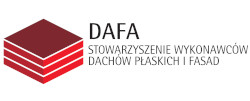Open Access (Artykuł w pliku PDF)
Nowa Metoda Podprzekrojów Prostokątnych (RSM) projektowania żelbetowych przekrojów teowych dźwigarów mostowych
M.Eng. Damian Kowalski, Częstochowa University of Technology, Faculty of Civil Engineering
ORCID: 0000-0002-0257-7642
Adres do korespondencji: Ten adres pocztowy jest chroniony przed spamowaniem. Aby go zobaczyć, konieczne jest włączenie w przeglądarce obsługi JavaScript.
DOI: 10.15199/33.2022.12.10
Original research paper
Abstract. The aim of this article is to present the new approach to a design of t-shaped beam elements, called a Rectangle Subsections Method (RSM). Its biggest advantage is that the internal forces from the components do not need to be added to obtain the total forces. In case of sagging, the results for RSM and Traditional Design Method (TM) appeared similar. At hogging, the RSM was more conservative – the ratio of the designed to the tested reinforcement area was 3.3 in RSMvs 2.6 in TM.
Keywords: concrete; structures; finite elements; bridges; design.
Streszczenie. Celem pracy jest prezentacja nowego podejścia do projektowania przekrojów teowych w elementach belkowych, zwanego Metodą Podprzekrojów Prostokątnych (RSM). Jego główną zaletą jest brak konieczności dodawania sił wewnętrznych z komponentów w celu otrzymania sił wypadkowych. W przypadku momentów dodatnich wyniki RSM i Metody Tradycyjnej (TM) okazały się zbieżne. Przy zginaniu ujemnym RSM była bardziej konserwatywna – stosunek powierzchni zbrojenia zaprojektowanego do badanego wynosił 3,3 w RSM vs 2,6 w TM.
Słowa kluczowe: beton; konstrukcje; elementy skończone; mosty; projektowanie.
References
[1] Ane de Boer, HendriksMAN, van derVeen C, Belletti B. Organizing an international blind prediction contest for improving a guideline for the nonlinear finite elements analysis of concrete structures in Computational Modelling of Concrete Structures – Meschke, Pichler & Rots (Eds), 2018, pp. 545 – 552.
[2] Talbot AN. Tests of reinforced concrete T-beam. 1906.
[3] Erdelyi L, Maric Z. A method of testing reinforced concrete T-beams in combined bending, shear and torsion. 1976.
[4] Palaskas MN, Attiogbe EK, D. Darwin D. Shear Strength of Lightly Reinforced T-Beams.
[5] Ayensa A, Oller E, Beltrán B, Ibarz E, Marí A, Gracia L. Influence of the flanges width and thickness on the shear strength of reinforced concrete beams with T-shaped cross section. Engineering Structures. 2019; 188: 506 – 518, doi: 10.1016/j.engstruct.2019.03.057.
[6] Thamrin R, Tanjung J,Aryanti R, FitrahNurO, DevinusA. Shear strength of reinforced concreteT- -beams without stirrups. Journal of Engineering Science andTechnology. 2016; 11, no. 4,: 548–562, [Online]. Available: https://www.researchgate. net/publication/302418381.
[7] Panggabean H, Pakpahan N. Experimental analysis of T-beam reinforced concrete with holes, in MATECWeb of Conferences, Aug. 2018, vol. 195. doi: 10.1051/matecconf/201819502006.
[8] Resan SF, Zamel JK. Flexural behavior of developed reinforced concrete beams of non prismatic flanges, inMaterialsToday: Proceedings. 2021; 42, pp. 2974–2983. doi: 10.1016/j.matpr.2020.12.808.
[9] Ferreira CC, Barros MHFM, Barros AFM. Optimal design of reinforced concreteT-sections in bending. Engineering Structures. 2003; doi: 10.1016/S0141-0296(03)00039-7.
[10] Seguirant SJ, Khaleghi B, Richard BriceW. Flexural Strength of Reinforced and Prestressed Concrete T-Beams. 2005; PCI, pp. 44–73.
[11] Cladera A, Marí A, Ribas C, Bairán J, Oller E. Predicting the shear-flexural strength of slender reinforced concrete T and I shaped beams.
[12] Ribas Gonzále CR, Fernández Ruiz M. Influence of flanges on the shear-carrying capacity of reinforced concrete beams without web reinforcement. Structural Concrete. 2017; doi: 10.1002/suco.201600172.
[13] Hendy CR, Smith DA. Designers’ Guide to EN 1992-2 Eurocode 2: Design of concrete structures. Part 2: Concrete Bridges. 2007.
[14] Al-Ansari MS. Reliability and flexural behavior of triangular and T-reinforced concrete beams. International Journal ofAdvanced Structural Engineering. 2015; doi: 10.1007/s40091-015-0106-5.
[15] Abbas RM and FadalaWA. Behavioral Investigation of Reinforced Concrete T-BeamswithDistributedReinforcement in theTension Flange. E3S Web of Conferences, vol. 318, p. 03010, 2021, doi: 10.1051/e3sconf/202131803010.
[16] EN 1992-1-1: Eurocode 2: Design of concrete structures – Part 1-1: General rules and rules for buildings. 2004.
Przyjęto do druku: 18.10.2022 r.
Materiały Budowlane 12/2022, strona 38-41 (spis treści >>)




























